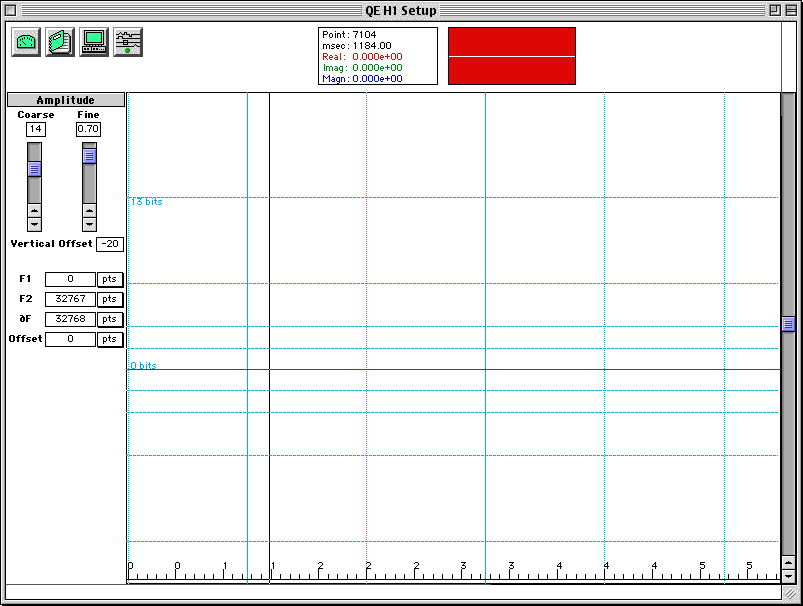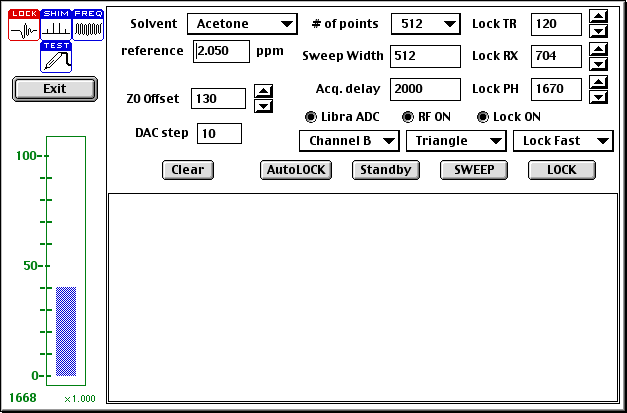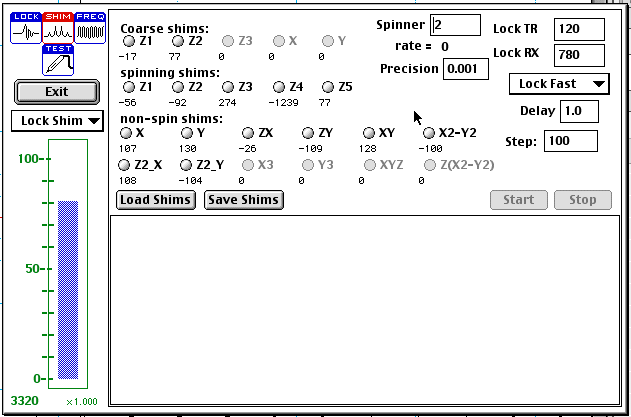Process the C-13 NMR Spectrum.
- Correct the baseline of the FID.
- Zero fill the FID.
- Exponential multiply the FID (Commdand Exponential Multiply). (This multiplication increases the signal-to-noise but also increases the linewidth of the NMR signals. The LB 1D is set in the Dashboard. The EM command only works if the line broadening parameter is nonzero. A LB of 1.0 should work well.)
- Fourier Transform the FID to the NMR spectrum.
- Run an autophase (AP) script using the script menu
 from the menu bar.
from the menu bar.

- Set the TMS peak to 0.0 PPM.
- Zoom in on TMS Peak
- Click on peak
- {Display, Set Reference}
- Enter 0
- click OK.
- Print the Spectrum.
- Carbon-13 NMR spectra do not typically provide useful integrations. So there is no need to integrate your C-13 spectrum. If you would like run a C-13 spectrum for integration, see Dr Van Bramer for details.
Complete Your Work on the QE300+.
- Remove the pens from the plotter pen carriage. SHUT THE PEN CARRIAGE IMMEDIATELY AFTER REMOVING THE PENS.
- If you ran C-13 spectra, change the spectrometer to collect proton data.
- Replace your sample with the line-shape sample.
- Reset the solvent to D-6 Acetone.
- Lock the sample as described previously (setting the transmitter Gain to 120 and the offset to 130).
- Shim the magnet.
- Sign out of the log book.
Transfer Files
The computer is setup as a web server, so the data files are available using any web browser. The URL is: http://147.31.140.63
This page is maintained by
Scott Van Bramer
Department of Chemistry
Widener University
Chester, PA 19013
Please send any comments, corrections, or suggestions to
svanbram@science.widener.edu.
This page has been accessed
times since 1/5 /96 .
Last Updated Tuesday, January 22, 2002 4:06:37 PM




![]()


![]()
![]()
![]()